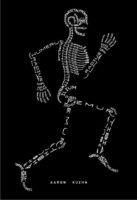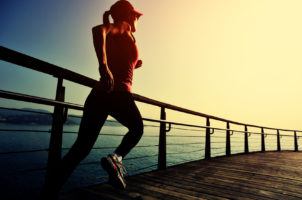 The human body is a phenomenally adaptable organism. We’re shape-shifters! I am consistently awed by the degree to which it’s possible for us to change what seems like “permanent” structure, both for the good and to our own detriment. And so often, what determines our mobility and structural health has more to do with HOW we do things than with WHAT we do.
The human body is a phenomenally adaptable organism. We’re shape-shifters! I am consistently awed by the degree to which it’s possible for us to change what seems like “permanent” structure, both for the good and to our own detriment. And so often, what determines our mobility and structural health has more to do with HOW we do things than with WHAT we do.
Let’s take it as a given that guidelines for minimum levels of physical activity are being met. Without a base level of daily movement, your body, your brain, your emotions and your intellect will not function at their best. So whatever your age or state of health, it is important to get your daily dose of motion. Whatever else you do, make sure you move.
But beyond that, how do we keep moving well? Lots of people hit the gym regularly, or get other kinds of regular physical activity, and would consider themselves fit – but suffer from chronic back pain or stiffness in their joints. Or feel that they have to push through a level of effort that can feel daunting at times. During a recent conference presentation, I was explaining how core stability actually works, and demonstrating the action with the help of a very fit, very strong female bodybuilder. My wonderful “subject” certainly was not lacking in strength or “fitness;” but she apparently suffered from some fairly intense back pain. As I worked through the problem with her, in front of the group, one of the participants asked “couldn’t she just strengthen her pelvis?” It’s a question I hear a lot. What can be “strengthened” to fix the problem. But more “strength” was not what this woman needed – she had that in spades. In her case, more strength and muscle mass would simply increase the load on an already unstable area. The problem was a faulty movement pattern, that when combined with a heavy weight load, put unsupportable stress on her lumbar spine, causing deterioration of the joints and severe nerve pain.
We have become so accustomed to the idea that we can “strengthen” our way out of any physical problem, that the idea that we can simply change the WAY we do things to affect immense change seems almost radical. We talk about balance in so many areas of our lives, but somehow, that idea doesn’t often translate into the context of fitness, where usually “more is better.” Can we really make significant change in shape and function of our structures, just by changing the way we approach things, the way we execute the movement? It can’t be that easy, can it? Well, it’s that easy, and it’s that hard.
Our movement patterns are largely unconscious. Those patterns develop over years and are affected by the activities we do or don’t do, by the food we eat, and by the emotions we feel. To make a change requires a degree of attention and awareness that most people aren’t accustomed to applying to physical activity. But it is possible. And once that attention and awareness is awakened, increases in overall movement potential are simply stunning.
What used to be hard to do, suddenly feels easy. What used to hurt, isn’t painful anymore. And where you used to get tired, now you find “more in the tank.”
So, if you’re ready to challenge yourself to reach the next level in your fitness, or if you’re ready to explore a new level of connection to your own moving body, it’s time to look at HOW you’re moving. This takes a new understanding of how your body works, and the relationships between moving parts. You’re more than just a heart, lungs and muscles!
And the best part? Once you learn how to connect differently, once you understand how you move best; you can take that knowledge into EVERYTHING you do! Instead of just supporting your body with a few hours a week of “exercise,” you begin to actually support yourself better all the time.
 The result? A body that moves better through life. You create a stable platform for whatever level of fitness and “strength” you desire. You feel more ease in everything you do – from sitting at your desk for hours to climbing mountains. You build a new relationship with your body that enables a whole new kind of injury prevention and potential for healing.
The result? A body that moves better through life. You create a stable platform for whatever level of fitness and “strength” you desire. You feel more ease in everything you do – from sitting at your desk for hours to climbing mountains. You build a new relationship with your body that enables a whole new kind of injury prevention and potential for healing.
